The Paralympic Games, or Paralympics, are a series of international multi-sport events for athletes with disabilities. They include both Summer and Winter Games, held shortly after the corresponding Olympic Games since 1988. The International Paralympic Committee (IPC) governs these games.
1904: George Eyser Makes History
German-American gymnast George Eyser made history in 1904 by becoming the first athlete with a disability to compete in the Olympic Games, paving the way for greater inclusion in the future.
1920: Establishment of Paralympic Opening Ceremony Rituals
Many of the rituals that shape the Paralympic Games opening ceremonies were established in 1920 at the Summer Olympics in Antwerp. These rituals, shared with the Olympics, include the hoisting of the host country's flag and the performance of its national anthem.
1924: Deaflympics Established
The Deaflympics, established in 1924, provide a dedicated platform for deaf athletes to compete internationally, predating the Paralympic Games.
1928: Olivér Halassy's Olympic Debut
Hungarian amputee water polo player Olivér Halassy participated in his first Olympic Games in 1928, going on to compete in three consecutive Games.
1939: Ludwig Guttmann Flees Nazi Germany
Sir Ludwig Guttmann, a key figure in the Paralympic movement, fled Nazi Germany in 1939 with the help of the Council for Assisting Refugee Academics (CARA).
1943: Lis Hartel Contracts Polio
Danish equestrian athlete Lis Hartel's life took a turn in 1943 when she contracted polio, but she overcame this challenge to compete at the Olympic Games.
1948: First International Wheelchair Games
Coinciding with the 1948 Summer Olympics in London, the first organized athletic event for athletes with disabilities, known as the International Wheelchair Games, was held, marking a pivotal moment in the Paralympic movement.
1948: Károly Takács' Olympic Journey Begins
Hungarian shooter Károly Takács, a right-arm amputee, began his Olympic journey in 1948, competing in the shooting events and demonstrating remarkable resilience.
1948: Inception of the Paralympics
The Paralympic Games trace their roots back to 1948, starting as a small gathering of British World War II veterans.
1952: Károly Takács and Lis Hartel Compete in Helsinki
Both Károly Takács and Lis Hartel, a Danish equestrian athlete who had contracted polio, participated in the 1952 Summer Olympics, showcasing the potential for athletes with disabilities to compete at the highest level.
1952: International Expansion of Wheelchair Games
The International Wheelchair Games expanded in 1952 to include Dutch and Israeli veterans, marking the first time the competition became international.
1960: Games Held Outside the UK
For the first time, the annual games were held outside of the UK in 1960, taking place in Rome to coincide with the 1960 Summer Olympics, a significant step towards the formal Paralympic Games.
1960: First Official Paralympic Games Held in Rome
Rome hosted the first official Paralympic Games in 1960, a groundbreaking event that solidified the Paralympic movement and set the stage for its global expansion.
1960: Paralympic Games Highlight Athletic Achievements
Since their inception, the Paralympic Games have aimed to emphasize the athletic achievements of participants rather than their disabilities, promoting a message of ability over disability.
1960: Alphabetical Parade of Nations Introduced
Starting at the 1960 Summer Paralympics, a new tradition was introduced to the Parade of Nations, where athletes entered the stadium grouped by nation in alphabetical order according to the host country's official language. The host country's athletes always enter last.
1960: Paralympics in Rome
The 1960 Paralympic Games in Rome marked a turning point, attracting 400 athletes from 23 countries, a significant increase in participation and international recognition.
1976: First Paralympic Television Broadcasts
Television broadcasts of the Paralympic Games began in 1976, initially limited to taped-delay releases in specific regions, marking an early step in expanding the Games' reach.
1976: Expansion of Disability Categories
The 1976 Summer Paralympics in Toronto marked a turning point with the inclusion of athletes with disabilities beyond wheelchair users, significantly broadening participation.
1976: First Winter Paralympic Games
The first Winter Paralympic Games were held in Örnsköldsvik, Sweden, expanding the Paralympic movement to winter sports.
1980: Trischa Zorn's Paralympic Debut
Trischa Zorn, a blind swimmer from the United States, began her illustrious Paralympic journey in 1980.
1984: Media Coverage Disparity Emerges
Despite the surge in global media coverage for the Olympic Games since 1984, the Paralympic Games faced challenges in maintaining consistent international media attention, highlighting the disparity in exposure between the two events.
1984: Neroli Fairhall Makes History at the Olympics and Paralympics
Neroli Fairhall, a paraplegic archer from New Zealand, made history in 1984 by becoming the first paraplegic competitor in the Olympic Games, finishing 34th in archery, and further cemented her place in history by winning a gold medal in the same event at the Paralympic Games.
1984: Neroli Fairhall Competes in Olympics
New Zealand Paralympic archer Neroli Fairhall made history in 1984 by becoming the first paraplegic athlete to compete in the Olympic Games, setting a precedent for Paralympic athletes seeking equal opportunities.
1988: Ragnhild Myklebust's Paralympic Debut
Ragnhild Myklebust, a Norwegian multi-sport athlete, embarked on her Paralympic journey in 1988, marking the beginning of a career that would see her become the most decorated Winter Paralympian.
1988: New Tradition in Paralympic Closing Ceremony
Since the 1988 Winter Paralympics, a new tradition was established for the closing ceremony. The national flag of the country hosting the next Summer or Winter Paralympic Games is hoisted while its national anthem plays, symbolizing the continuity of the Paralympic movement.
1988: Seoul Hosts Paralympics After Olympics
The 1988 Summer Paralympics in Seoul set a precedent by being held directly after the Olympic Games in the same host city, using many of the same venues.
1988: Summer Paralympics Held in Seoul
The 1988 Summer Paralympics, held in Seoul, South Korea, marked a significant milestone as the first Paralympic Games to be held directly after the Olympic Games in the same host city, setting a precedent for future events.
1988: Term "Paralympic" Officially Adopted
The term "Paralympic" was officially adopted at the 1988 Summer Games in Seoul, reflecting the Games' position alongside the Olympics and signifying a competition held in parallel.
1989: IPC Established, Fostering Collaboration with IOC
The establishment of the International Paralympic Committee (IPC) in 1989 marked a significant step towards a cooperative relationship with the International Olympic Committee (IOC), fostering greater collaboration and support for Paralympic athletes.
1992: Corporate Sponsorship in Paralympics
Beginning with the 1992 Summer Paralympics, the Games started receiving support from major sponsors, enabling financial growth and increased visibility, unlike the Olympics, where sponsor logos are restricted.
1992: Inclusion of Athletes with Intellectual Disabilities
Since 1992, the Paralympic Games have included athletes with intellectual disabilities, expanding the inclusivity and scope of the Games.
1992: Paid Television Coverage of Paralympics
The 1992 Paralympic Games organizers had to pay networks to televise the Games. This highlights the challenges faced in gaining media attention during the early 1990s.
1992: Limited Live Coverage at Barcelona Paralympics
The 1992 Summer Paralympics in Barcelona saw 45 hours of live television coverage, although it was primarily available in Europe, with other countries receiving highlight packages, reflecting the ongoing struggle for comprehensive international broadcasting.
1992: Winter Paralympics in Albertville
The 1992 Winter Paralympics in Albertville, France maintained the tradition of being held in the same year as the Summer Paralympics.
1992: Paralympics Follow Olympics but Use Different Venues
While the 1992 Summer Paralympics in Barcelona followed the Olympics, they utilized different competition venues, a practice that would later change.
1994: Shift in Winter Paralympics Schedule
Starting with the 1994 Games in Lillehammer, the Winter Paralympics shifted to be held in even-numbered years, two years after the Summer Games and separate from the Winter Olympics.
1994: First Winter Paralympics to Share Venues with Olympics
The 1994 Winter Paralympics in Lillehammer, Norway marked the first time the Winter Games shared the same venues and Organizing Committee as the Winter Olympics.
March 1996: Paralympic Anthem Adoption
In March 1996, "Hymne de l'Avenir" or "Anthem of the Future," composed by Thierry Darnis, was adopted as the official anthem of the Paralympic Games.
1996: Paid Television Coverage of Paralympics
The 1996 Paralympic Games organizers had to pay networks to televise the Games, indicating continued challenges in securing free-to-air coverage.
1996: Paralympics Continue to Follow Olympics
The 1996 Summer Paralympics in Atlanta, Georgia continued the tradition of being held in the same year and city as the Olympic Games.
2000: Spanish Paralympic Basketball Team Controversy
After the 2000 Sydney Games, allegations surfaced concerning the eligibility of members of the Spanish basketball team with intellectual disabilities, leading to an investigation and the suspension of all ID competitions.
2000: Doping Cases at the 2000 Sydney Paralympics
The 2000 Games in Sydney were also marred by doping scandals, with ten powerlifters and one track athlete being banned, revealing the challenges faced in upholding fair play.
2000: Sydney Hosts Paralympics After Olympics
The 2000 Summer Paralympics in Sydney followed the precedent set in Seoul, taking place after the Olympic Games in the same host city.
2000: Sydney 2000 Marks Improvement in Coverage
The 2000 Summer Paralympics in Sydney marked a turning point in media coverage, with significant improvements in broadcasting and greater international attention, contributing to the growth and recognition of Paralympic sports.
2000: 2000 Sydney Paralympics Media Coverage
The 2000 Sydney Paralympics marked a turning point in the global media exposure of the Paralympic Games. A deal was reached to broadcast the Games internationally, reaching an estimated 300 million people worldwide. This was also the first time the Games were webcast.
June 2001: IOC-IPC Agreement for Joint Bidding
In June 2001, the International Olympic Committee (IOC) and the International Paralympic Committee (IPC) signed a historic agreement to automatically include the Paralympics in Olympic Games bids, starting with the 2008 Summer Paralympics in Beijing and the 2010 Winter Paralympics in Vancouver.
2001: Formal Agreement Between IPC and IOC
In 2001, the IPC and IOC formalized their agreement to hold the Paralympic Games in the same year and city as the Olympic Games, solidifying the partnership.
2002: Ragnhild Myklebust's Paralympic Retirement
At the 2002 Winter Paralympics, Ragnhild Myklebust solidified her legacy by winning five gold medals and retiring with a record-breaking 22 medals, including 17 golds, in Winter Paralympic history.
2002: First Winter Paralympian to Test Positive for Steroids
German skier Thomas Oelsner became the first Winter Paralympian to be sanctioned for steroid use, resulting in the stripping of his two gold medals from the 2002 Winter Paralympics, a significant event in the fight against doping.
2002: Salt Lake City Hosts Joint Games
The 2002 Winter Olympics and Paralympics in Salt Lake City marked an important precedent by having a single Organizing Committee for both events, reinforcing the concept of "one bid, one city."
2003: Paralympic Motto and Symbol Change
In 2003, the International Paralympic Committee (IPC) changed its motto to "Spirit in Motion" and adopted a new symbol featuring three Agitos (asymmetrical crescents) in red, blue, and green, representing the athletes and the global nature of the Games. This change aimed to emphasize the spirit of competition and the IPC's forward momentum.
2003: Agreement Between the IPC and IOC Adjusted
In 2003, the agreement between the International Olympic Committee (IOC) and the International Paralympic Committee (IPC) was adjusted.
2003: IPC's Collaboration with WADA
The IPC began collaborating with the World Anti-Doping Agency (WADA) in 2003 to ensure compliance with anti-doping regulations among Paralympic athletes, demonstrating a commitment to clean sport.
2004: Athens Follows Joint Games Model
Athens continued the practice of hosting the Olympic and Paralympic Games together in 2004, further solidifying the idea of a unified approach.
2004: Trischa Zorn's Paralympic Retirement
In 2004, Trischa Zorn concluded her remarkable Paralympic career, retiring as the most decorated Paralympian in history with 55 medals, including 41 golds.
June 2006: IOC-IPC Agreement Extended
After facing challenges during the 2006 Winter Paralympics, the IOC and IPC extended their agreement in June 2006, initially until the 2012 Summer Olympics.
2007: Sochi Begins Accessibility Improvements
In preparation for hosting the 2014 Winter Paralympics, Sochi, Russia, began implementing accessibility improvements in 2007 to make the city more inclusive for people with disabilities.
2008: Reinstatement of Intellectual Disability Competitions
Following the controversy surrounding athlete eligibility, intellectual disability (ID) competitions were reinstated after the 2008 Games, with stricter criteria and controls in place.
2008: Oscar Pistorius Aims for Olympics
In 2008, South African sprinter Oscar Pistorius, a double amputee who runs on prosthetic blades, attempted to qualify for the Summer Olympics, sparking debate about the inclusion of athletes with disabilities in able-bodied competitions.
2008: Doping Cases at the 2008 Beijing Paralympics
The 2008 Games in Beijing saw multiple doping cases, with three powerlifters and a German basketball player being sanctioned, highlighting the ongoing battle against performance-enhancing drugs in Paralympic sport.
2008: Beijing Hosts First Integrated Games Under Agreement
The 2008 Summer Paralympics in Beijing marked the first time the Games were held under the new agreement between the IOC and IPC, ensuring automatic inclusion of the Paralympics in Olympic bids.
2008: Increased UK Viewership for 2008 Summer Paralympics
The 2008 Summer Paralympics saw a rise in viewership in Great Britain, with 23% of the population tuning in, indicating a growing interest in Paralympic sports.
2010: Positive Impact of the 2010 Vancouver Paralympics
A 2010 study by the University of British Columbia (UBC) revealed that the 2010 Paralympic and Olympic Games in Vancouver had a positive impact on accessibility and employment opportunities for people with disabilities.
2010: Limited Coverage of the 2010 Winter Paralympics
Despite progress in media exposure, the 2010 Winter Paralympics faced limited coverage, exemplifying the ongoing struggle for consistent media attention.
2010: Vancouver Hosts Integrated Winter Games
Following the agreement, the 2010 Winter Paralympics in Vancouver became the first integrated Winter Games, demonstrating the commitment to a unified approach in hosting the Olympics and Paralympics.
2010: Doping Case in Wheelchair Curling
Swedish curler Glenn Ikonen's positive drug test at the 2010 Winter Paralympics in Vancouver, despite his claim of a doctor-prescribed medication, further emphasized the complexities surrounding doping in Paralympic sports.
2010: BBC Criticism for Limited Paralympic Coverage
The BBC's minimal coverage of the 2010 Winter Paralympics, compared to the 2010 Winter Olympics, sparked criticism, highlighting the disparity in media attention between the two events.
2010: Russia Excels at 2010 Winter Paralympics
The Russian Paralympic team's success at the 2010 Winter Paralympics in Vancouver, where they topped the medal table, brought attention to the disparity in performance and support between the country's Olympic and Paralympic athletes.
2011: Oscar Pistorius Qualifies for 2012 Olympics
Oscar Pistorius qualified for the 2012 Summer Olympics in 2011, becoming the first amputee sprinter to compete in the Games and further pushing the boundaries of inclusion in athletics.
July 2012: Channel 4's Extensive Paralympic Coverage
In July 2012, Channel 4's acquisition of UK broadcast rights for the 2012 Summer Paralympics led to a significant increase in coverage hours, reaching 150, and the launch of digital platforms dedicated to Paralympic content, marking a turning point in UK Paralympic coverage.
2012: Return of ID Sports at the Paralympics
Four sports with intellectual disability categories were included in the 2012 Summer Paralympics after rigorous work to ensure fair competition.
2012: Paralympic Heritage Flame Introduced
In 2012, the Paralympic flame incorporated a "heritage flame" lit at Stoke Mandeville, recognizing its historical significance as the birthplace of the Paralympic movement.
2012: Oscar Pistorius Competes in London Olympics
Oscar Pistorius made history at the 2012 Summer Olympics in London, competing in the 400 meters and 4x400 meters relay, sparking discussions about fairness and technology in sports.
2012: London 2012 Aims to Change Attitudes
Sebastian Coe, Chairman of the London organizing committee, emphasized the importance of the 2012 Summer Paralympics in changing public perceptions of disability, showcasing the excellence of Paralympic athletes, and promoting the integration of the Olympic and Paralympic Games.
2012: Recognition for Guides in Paralympic Sport
Starting in 2012, guides for athletes with visual impairments, including sighted goalkeepers in 5-a-side football, became eligible to receive medals, marking a significant recognition of their contribution to Paralympic sport.
2012: London 2012 Emphasizes Integration
The 2012 Summer Olympics and Paralympics in London placed a strong emphasis on integration, aiming to change attitudes toward disability and showcase the excellence of Paralympic sport.
2014: Doping at the 2014 Sochi Winter Paralympics
Evidence of systematic doping by Russian athletes, including at the 2014 Winter Paralympics in Sochi, highlighted a serious breach of anti-doping rules and ethical conduct.
2014: Russia Hosts First Winter Paralympics
In 2014, Russia hosted its first Winter Paralympic Games in Sochi, marking a significant milestone in the country's commitment to Paralympic sport. This event coincided with Russia's ratification of the UN Convention on the Rights of Persons with Disabilities, highlighting the nation's efforts to promote inclusivity and accessibility.
August 2016: Banning of the Russian Paralympic Team
In August 2016, the IPC made the unprecedented decision to ban the entire Russian Paralympic team from the 2016 Summer Paralympics due to state-sponsored doping, a decision that sent shockwaves through the Paralympic movement.
2016: Record Participation in Rio Paralympics
The 2016 Rio Paralympics witnessed record participation with 4,342 athletes from 159 countries, highlighting the global reach and impact of the Paralympic movement.
March 10, 2018: IOC and IPC Extend Partnership
The International Olympic Committee (IOC) and the International Paralympic Committee (IPC) further extended their partnership agreement to 2032, ensuring the Paralympic Games would continue to be held alongside the Olympic Games.
March 2018: Agreement Extended to 2032
On March 10, 2018, the IOC and IPC solidified their partnership by extending the agreement for joint hosting until the 2032 Summer Olympics, underscoring the enduring commitment to inclusivity and the Paralympic Movement.
January 2020: Paralympics Classified as Category A Listed Event
In January 2020, the Paralympics' classification as a Category A "listed" event by Ofcom solidified their importance in UK broadcasting, mandating free-to-air coverage.
2020: Tokyo Hosts Paralympics After Olympics
The 2020 Paralympic Games in Tokyo were held after the Olympic Games, continuing the tradition established in previous years.
2020: 2020 Summer Paralympics
The 2020 Summer Paralympics highlighted the continued growth and global reach of the Games, with 4,520 athletes from 163 National Paralympic Committees participating.
2020: Agreement Extended to 2020 and Beyond
The agreement between the IOC and IPC was further extended to cover all Summer and Winter Games up to the 2020 Summer Olympics and beyond, signaling a long-term commitment to joint hosting.
2020: New Paralympic Flag Introduced
The current Paralympic flag, featuring three Agitos in a circular arrangement, was introduced in 2020. The colors of the Agitos, red, blue and green, represent the colors most widely used in national flags around the world.
September 2021: 2020 Summer Paralympics Held in September 2021
Postponed from 2020 due to the COVID-19 pandemic, the 2020 Summer Paralympics were held in September 2021, marking the first time in history that the Paralympic Games had been postponed.
2024: Channel 4's Continued Commitment to Paralympic Coverage
Channel 4's renewal of broadcast rights for the Paralympics through 2024 demonstrates a dedicated commitment to showcasing Paralympic sports.
2024: Paralympic Torch Relay to Begin in Stoke Mandeville
Starting in 2024, future Paralympic torch relays will officially commence in Stoke Mandeville, solidifying its status as the origin of the Paralympic movement.
2032: Paralympics to be Held Alongside Olympics
The agreement between the IPC and IOC ensures that the Paralympic Games will continue to be held alongside the Olympic Games through 2032.
2032: Future Games to Follow Unified Approach
With all currently announced Summer and Winter host cities preparing for both Olympic and Paralympic Games, the legacy of joint hosting is set to continue well into the future, as exemplified by the 2032 Summer Olympics and Paralympics.
Mentioned in this timeline
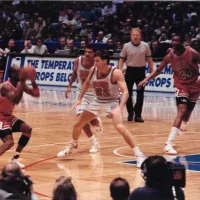
Basketball is a team sport played on a rectangular court...
New Zealand is an island country located in the southwestern...
Germany officially the Federal Republic of Germany is a Western...
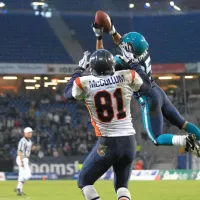
Football is a family of team sports primarily involving kicking...
Korea is a peninsular region in East Asia comprised of...

Barcelona is a major city located on the northeastern coast...
Trending
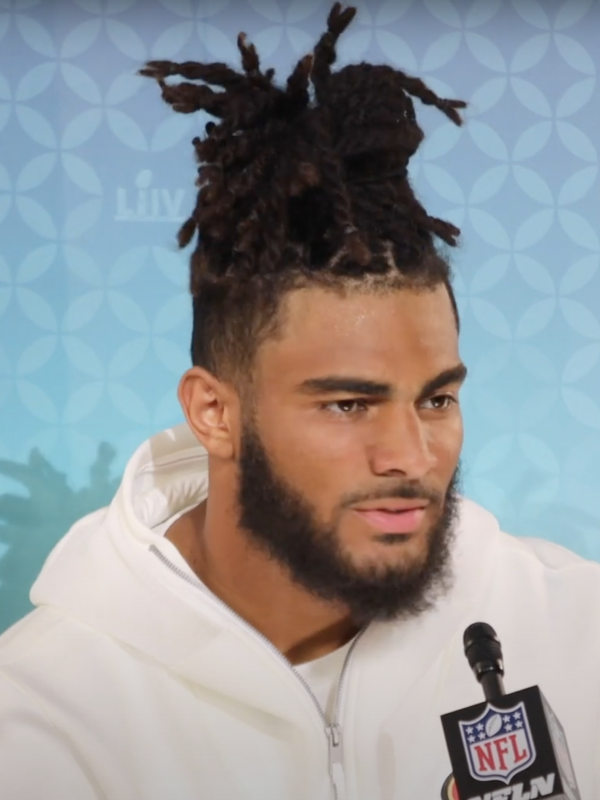
7 months ago Fred Warner becomes NFL's highest-paid linebacker with 49ers contract extension.
Marlon Humphrey is a professional football cornerback for the Baltimore Ravens in the NFL He played high school football at...
29 days ago Todd and Julie Chrisley Home After Trump Pardons End Prison Sentence.
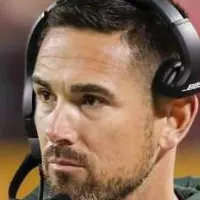
1 month ago LaFleur Anticipates Aggressive Lions, Addresses Campbell Rivalry & Hutchinson Challenge For Packers

8 months ago Josh Jacobs infuriated by Raiders' Chiefs logo dance; former player recalls backfire.
1 month ago SpaceX Falcon 9 Launches Starlink Satellites from Cape Canaveral on 150th Mission.
Popular

XXXTentacion born Jahseh Dwayne Ricardo Onfroy was a controversial yet...

Stranger Things created by the Duffer Brothers is a popular...

Candace Owens is an American conservative political commentator and author...
The Kennedy Center Honors are annual awards recognizing individuals and...
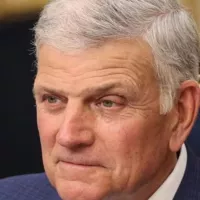
William Franklin Graham III commonly known as Franklin Graham is...
Turning Point USA TPUSA is an American nonprofit organization founded...